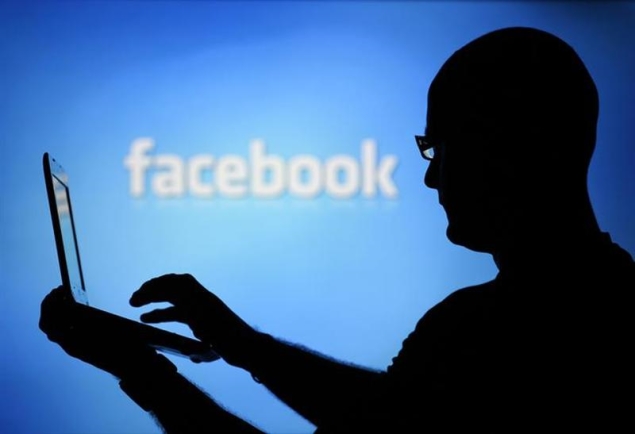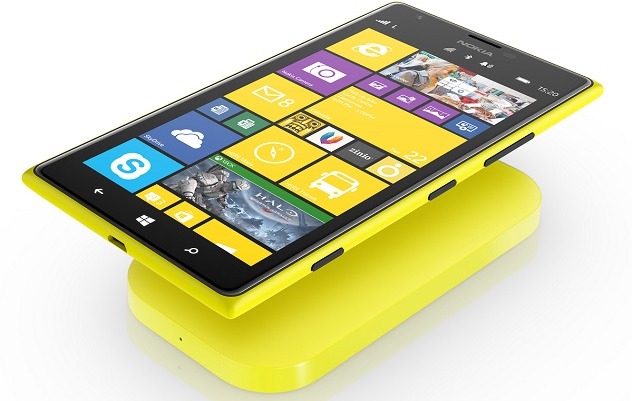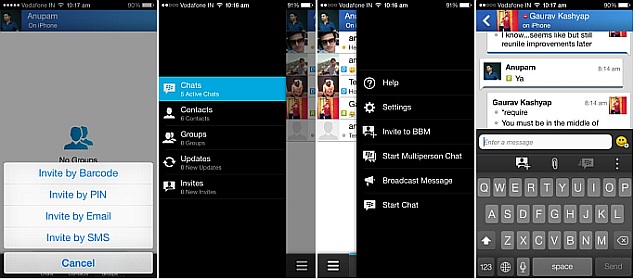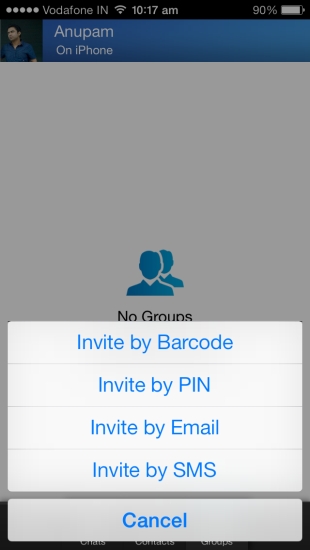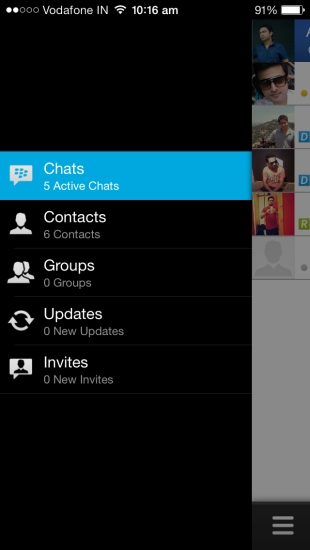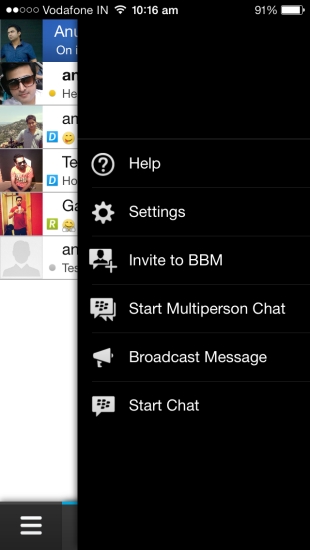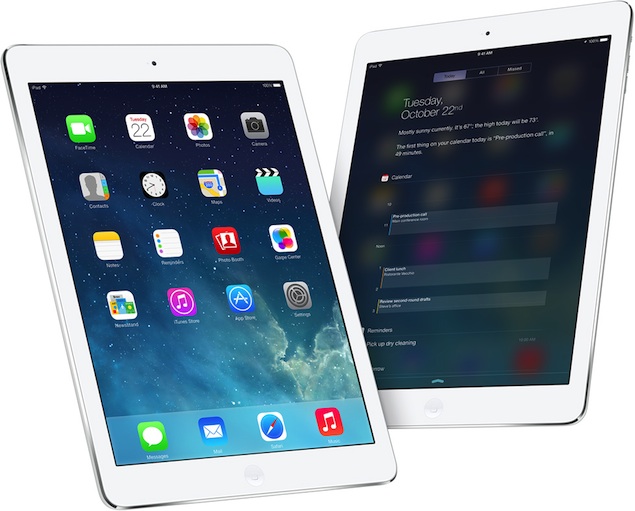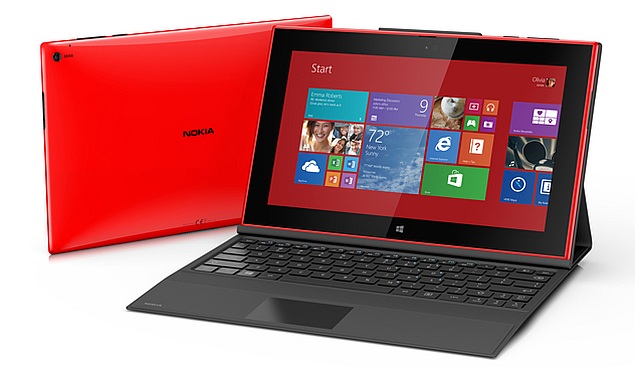LAPTOP shopping is always a difficult task. They come by so many different names these days, Chromebooks, Ultrabooks, Zenbooks, Notebooks, Macbooks, it's all pretty confusing.
News.com.au has put together a list of some of the best laptops on the market to help your decision making process a little easier.
Please note there are a ton of great laptops on the market that didn't make this list, that doesn't mean they shouldn't be considered. There are just only so many computers you can fit into one story.
WHAT'S A CHROMEBOOK?
A Chromebook is a laptop brought to you buy the good people at Google and comes in eight different models that come from Acer, Samsung, HP and Google.
It runs on an operating system that is basically adapted from Google's own Chrome browser. These devices are making waves for its blurring of the boundaries between browser and desktop. Features like YouTube can run independent of the Chrome browser and it also supports offline browsing.
Upside: The low-end Chromebooks are incredibly lightweight, so much so you can carry them in a handbag all day without any strain.
With the exception of a few models, Chromebooks are mostly housed in plastic which gives them a sort of flimsy feeling but they're sturdy and you don't have to be as worried about fragile parts shattering or breaking off.
Prices start from $199 and go all the way up to $1299 - still a darn site cheaper than any Apple computer. They're also a lot cheaper than a lot of other laptops on the market.
Downside: The Chromebook may not be the device of choice for the paranoid. You have to login to your Google account to even begin using this computer. Google - as we already know - tracks the content of your inbox in order to deliver you targeted advertising. It's also been in hot water over allegedly sharing information with the NSA. If you're concerned about having your activity tracked, this probably isn't the device for you.
High end: The Chromebook Pixel
Price: $1299
Chromebook Pixel
Upside: The Chromebook Pixel has a stunning display with an insane resolution of 1560 x 1700 which is higher than even what the Macbook Pro offers. While you can only choose between 32 or 64GB of internal storage, all Chromebook Pixel users are given a Terabyte of cloud storage in Google Drive. The experience is smooth, fast and totally seamless. Hardware and performance wise it stands up against almost every rival on the market including the Macbook Pro or Windows OS.
It's all metal body and lack of tapering makes the Pixel one damn sturdy computer. It looks big. It feels big. It's probably more suited to people who don't do a lot of travel or need to take their laptop from place to place. This baby is too bulky to be carried around full-time.
It sports a touchscreen display so you can choose whether to scroll using the track pad or control the activity on screen with your fingers. You can select apps by tapping on the screen, or you can click the track pad - whichever you feel more comfortable with.
The Chromebook includes a range of customised functions buttons that sit above the keyboard which let you change things like brightness, a refresh button, and the ability to switch between browsers. The capslock button has also been replaced with a search key.
Downside: Most of the apps that run on this computer are web based and not optimised for touch yet - though Google has said that many of these missing features will be added to apps shortly - so you might find yourself relying more on traditional touchpad scrolling and clicking for apps. Switching between apps is also difficult.
While video streaming on sites like YouTube is seamless, playing videos that are saved to the device can be stutters at times. The computer can handle about five hours of active use before needing a recharge, which is slightly less than its Apple or Microsoft rivals.
$1299 is also a lot to play for a laptop that is basically designed for web browsing. If you regularly play video games, use video or photo editing software or word processing programs, this isn't the computer for you.
Low end: Acer C7 Chromebook
Price: $349
Upside: Its 1366 x 768 resolution is standard for most laptops in its range. Its display is sharp and unless you're super up close imperfections are difficult to notice. Comes with a headphone jack, power adaptor port, an ethernet port, three USB ports, a VGI and HDMI port to enable you to connect to an external display, and a full-size SD card slot.
Like other Chromebook models the C7 has a bunch of function keys that sit above the keyboard that allow you to control brightness, video and music playback, refresh and go forward and back in the browser.
It also features a touch screen so you can choose between hands-on interaction or a more traditional trackpad, point and click experience. The Acer C7 Chromebook sports 2GB of RAM and a 320GB hard drive, powered by a 1.1GHz chip. It sports between 4.5-5 hours of battery life. Also, did we mention it's $349?
Downside: The Acer is not the prettiest of the Chromebook range. It's all plastic body makes everything feel like it can bend, stretch or break. It's a pretty uninspired design and it's parts are a bit clunky. The hinge sticks out behind the base like it's about to come off. But obviously for a Chromebook that costs $200, you're obviously going to have to make some sacrifices on design.
The screen isn't very bright and the black bezel is glossy and reflective, it can be a bit distracting. The trackpad can be jolty at times and the cursor tends to jump around the screen. Like most of the Chromebook models they're designed mostly for web browsing. Those requiring processing power to run editing or word processing software will be left wanting. Tends to get hot when it runs absolutely anything.
WHAT'S A MACBOOK?
A Macbook is a laptop produced by Apple.
High end: Macbook Pro 15-inch
Price: Starting at $1349
Macbook Pro Source: Supplied
Upside: At 1280 x 1800 pixels the full HD resolution of the Macbook Pro 15-inch is the most powerful of the Mac range. (The 17 inch used to hold the top gong but it was recently quietly discontinued by Apple). The resolution is not quite as amazing as the Retina Pro iPad but it's the closest any in the range come to it.
If you're a photo editor, graphic designer, video editor this is the computer for you (that is if you really want to work on a laptop and not a desktop computer like the iMac - which, for the sake of your eyes, back and posture, we don't recommend).
The base model starts with a 2.3GHz quad-core Intel Core i7 processor with a GeForce GT 650M, 8GB RAM, and flash storage that ranges from 256GB to 768GB, this laptop is great for gamers who will appreciate how the graphic chip set brings out their special affects. This isn't the most powerful gaming machine on the market but it's certainly up there and is capable of delivering amazing special affects and smooth playing at 24-30 FPS.
The 15 inch is a lot quieter than past models. And its flash storage makes it a much faster machine. The computer boots almost instantly and it transitions from sleep to wake even faster. The firewire and ethernet ports have been replaced with a thunderbolt port, two USB 3 ports, and an HDMI out port.
Downside: Though Apple claims the model is a lot cooler than past models but the machine is still hot to touch due to its massive processing power and apps. With prices between $1,349 and $3,199 for the Retina Pro model, it's the most expensive laptop in the Apple range and in the market.
Low end: Macbook air
Price: Starts at $1099
Macbook Air Source: Supplied
Upside: This is the freelancer's computer of choice. It has CRAZY battery life which can last up to 12 hours. You know what that means: portable office. Relocate your office to the nearest coffee shop and annoy all the wait staff. Just remember to keep ordering coffee or you'll likely be asked to leave.
It also boasts faster wi-fi speeds than previous models and improved graphics. It contains two USB ports, a thunderbolt port and SDXC card slot. Claims three times faster wi-fi than previous models but will depend on whether you're using a compatible router. (Apple routers cost $249). This computer is for normal people looking for all the regular things a laptop delivers like word processing, the ability to browse the web and run apps. It contains a 1.3Ghz core i5 processor, 128GB storage (an upgrade of 256GB more costs $200) and Apple claims it has 40 per cent better graphics that previous models.
Downside: If you're still the kind of person that buys CDs or DVDs, this computer isn't for you. The Macbook Air has no CD drive, though you can buy an external one that plugs in via USB but it'll cost you $99. It contains a Macsafe 2 power socket which means if you're upgrading from other models you'll also need to buy a new adaptor.
It contains a 720p Facetime front facing camera and a 1440 x 900 display - pretty average compared to its Windows and Chrome competitors - even against other Apple Macbook Pros. The air is definitely not a gaming computer, on the upside it handles the graphics reasonably well, but it does cause the computer to become very hot. This is also not the computer you'd use for any high end or professional photography or video work. The Air just doesn't have the processing power to run those kinds of programs.
WHAT'S AN ULTRABOOK?
An Ultrabook is a high-end laptop range released by Intel which are designed to massively reduce weight and bulk without compromising on battery life and performance.
High end: Fujitsu Lifebook U772
Price: $3079
Lifebook Source: Supplied
Upside: This low cost laptop holds six hours of battery life, weighs 2.4kgs and features a dual core processor. It contains 2 USB ports and an HDMI and VGA port. Contains a DVD + RW optical drive and a resolution of 1366 x 768. It costs $499.
Downside: Only contains 4GB of RAM, this isn't exactly the kind of computer you're going to be able to store a lot of music or movies on. Future models will have 3G and LTE capability but sadly this is not available in the current model. It's also damn pricey, costing $3079.
Low end: Asus S56
Price: $765
Asus S56 Source: Supplied
Upside: Slim design, fast boot times, runs i5 processor which consumes only 17W of power which will help with battery life. Features 6GB of RAM running at 1600 MHz and it boots and wakes up quickly. Durable, it is made out of aluminium and plastic. Features an Ethernet port. Features three USB ports, a VGA, HDMI port and Ethernet jack and a CD/DVD drive.
Downside: The s56's HD 4000 graphics, this is not a computer for hardcore gamers. It's resolution of 1366 x 768 and glossy screen makes glare and reflection a bit of an issue, making this better suited as an indoor computer.
WHAT'S A HYBRID?
A hybrid is any laptop that can double as a tablet. More than ever consumers want to be able to use their devices as a touch display when they need, and word process with a proper computer on demand. These models solve that conundrum.
High end: Acer Aspire R7
Price: $2099
Upside: This machine has a 15.6-inch screen, runs on an Intel Core i7 processor with 12GB RAM and 1TB storage. It has SD card, HDMI and two USB ports.
Downside: Hybrid machines are all the rage but in some cases you're left asking whether the combination works. Its point of difference is its screen that has a hinge allowing four modes: easel, display (where you flip the screen to display it to people sitting across the table), notebook and pad.
That gives it remarkably versatility, but in pad mode you're carrying around a giant, 2.5kg tablet and who wants to do that? Another design issue is the position of the trackpad that has gone to the top of the keyboard making it awkward to use.
Mid range: Acer Aspire S7
Price: $1899
Acer Aspire S7 Source: Supplied
Upside: If you judge an Ultrabook by its cover, you're going to judge this highly. It's just 12.9mm thick, weighs 1.3kg and has a back panel of white Gorilla Glass. The keyboard gives that pleasing click of proper keys, and is well spaced thanks to a design combining number and function keys.
Our review model had a 13.3-inch touchscreen and ran an Intel Core i7 chip, with 4GB RAM and 256GB storage. The slim design still allows for a full-sized SD card and HDMI ports, plus two USB slots. Acer says the improved design gives this a 33 per cent boost in battery life, giving it up to seven hours. Looks, in this case, are not deceiving.
Downside: The computer looks very cool until you notice all your fingerprints.
Mid range: Toshiba Portege Z10t
Price: $1199
Toshiba Portege Z10t Source: Supplied
Upside: This is the sort of hybrid device likely to appeal to many consumers. Think of it either as a 11.6-inch tablet with a keyboard dock or a Ultrabook with a detachable screen. It's powered by your choice of a Celeron or Core i5 processor. The screen/tablet has Micro HDMI, USB and SD card connections. Pop it into the keyboard and you gain an extra full HDMI port, another USB and a VGA port to connect it to a larger screen. Road warriors will love its size and 800g weight.
Downside: The keyboard buttons are small and require adjustment. One downside is that the screen sits in the dock at a straighter than normal angle and you'll find you want to keep pushing it back.
Low end: Windows Surface 2:
Price: Starts at $529
Surface 2 shows Microsoft is listening to its consumers. Source: Supplied
Upside: Its predecessor, the Surface RT, was met with a bunch of complaints, most of which have been addressed in this model. The Surface 2 runs an Intel 4th generation Haswell chip which Microsoft claims has resulted in a 75 per cent increase in battery life of about seven hours. The battery has increased in size by 25 per cent too, so that might also help. Features a Tegra 4 processor, and a full HD 1080p screen.
The Surface 2 is lightweight and slimmer than the RT. It's made for handbags. Microsoft has also added another angle to the kickstand, allowing it to sit on your lap without risk of falling to the floor and getting damaged.
The app store now features 100,000 apps, a darn site huge improvement from the 10,000 it used to sport. Works well for gamers, delivering smooth playback without any lag or stuttering. Lets you use Xbox 360 controller in conjunction with the device, which is handy, particularly if you're a portable gamer. You can use it as a laptop and a tablet, also comes with a new DJ cover and soft MIDI controller deck designed to work as a portable music solution for any aspiring musicians or DJs. Has a bespoke desktop stand so you can choose the angle you want the device to sit at.
Downside: The Surface 2 runs on a scaled back Windows 8.1 operating system, so users aren't going to be able to see the full potential of the OS. The previous model Surface RT experienced miserable sales, so convincing the market that it has listened might be a challenge for Microsoft. Hopefully consumers will give them a second chance. The price starts at $529.
Multi Flip Sony Vaio 13-inch
Price: TBA
Sony Vaio 13-inch Source: Supplied
Upside: This computer is a laptop and a tablet all in one. It has a release mechanism below the screen that allows you to rotate and flip the screen. The stylus can be used in conjunction with programs like Adobe Photoshop and other editing software. It contains a Haswell i7 processor and boasts a 1920 x 1080 display (The 15 inch model has a higher resolution). It also has an hdmi port, SD card slot and two usbs as well as a rear facing camera.
Downside: The computer does not have a storage spot for the stylus pen so you'll have to store it in your handbag or pocket, which can be a little frustrating. It's not exactly the thinnest hybrid on the market, and it's quite heavy so not exactly the easiest thing to carry around. The price has yet to be confirmed.
OTHER LAPTOPS:
High end: Lenovo Elite Performance W530
Price: $3999
Lenovo Elite Performance W530 Source: Supplied
Upside: The computer takes less than 30 seconds to boot up thanks to its RapidBoot and BootShare technologies. Lenovo claims its battery takes as little as 30 minutes to charge up to 80 per cent. Some models offer 4G mobile connectivity. Features a core i7 and 32GB of RAM and RAID 0 or 1 storage and a Nvidia Quadro GPU. It can run Windows 7 or 8.
Downside: This is one heavy beast, weighing in 2.4kgs. It's also damn pricey, costing $3,999. You can also choose one of the less "blunged up" models. Prices start at $1,349.
Low end: Lenovo B590
Price: $499
Lenovo B590 Source: Supplied
Upside: This is the kind of computer you want to perform basic tasks like web browsing, word processing and other business requirements. It runs quietly and has excellent battery life of up to nine hours.
Comes equipped with an Intel Core i3-3110M, 4GB of RAM and a 500GB hard drive. Sports 4 USB ports, a VGA, LAN and HDMI cables and a DVD drive. Bluetooth compatible. Its 1366 x 768 display is not heavily reflective, making it good for outdoor use and mobile offices.
Downside: Not a computer who want to play high resolution games or watch movies. Cased in plastic, tends to get dirty easily, fingerprints are quite visible. No docking port. Not the kind of computer to store music, films or big files on as it only contains 4GB of storage. That means this isn't a computer for photographers, videographers, graphic designers or other professions that deal with massive file sizes every day.
Mid range: LG Z360
Price: $1399
Upside: LG'S Z360 laptop will appeal to those looking for a lightweight, attractive Ultrabook. Its plastic case helps keep that weight down to 1.5kg, while inside it offers a bright, full high-definition 13.3-inch screen, an Intel Core i5 chip, full-sized HDMI connection, and two USB ports. One unusual addition to its connections is two Micro SD memory card slots, which make it easy to load phone photos but mean you're going to need a USB adaptor to upload pictures from a camera. It offers 4GB RAM and 128GB of storage. We liked the extra column of Windows keys, which helped navigate Windows 8.
Downside: The trackpad doesn't give you any sensation when clicking, forcing you to look down, it also lacks a touchscreen.
High end: ASKS N750
Price: $2299
ASKS N750 Source: Supplied
Upside: It has a 17.3-inch, full high-definition screen, uses an Intel Core i7 processor, has 4GB RAM and 1TB storage. There are four USB ports plus an HDMI and SD card slot. It's an attractive and functional design, with an aluminium shell and a bevel around the edge of the keyboard.
One of its selling points is the inclusion of four speakers, designed by Bang & Olufsen, plus a subwoofer you can plug in. Another benefit of its size is the space on the keyboard, which includes a full numeric keypad and an extra-large trackpad.
Downside: Tipping the scales at 3.3kg and measuring 41cm wide, this desktop replacement is not the sort of machine you'd want to carry every day. Unlike the smaller model in this range, there is no option for a touchscreen.
